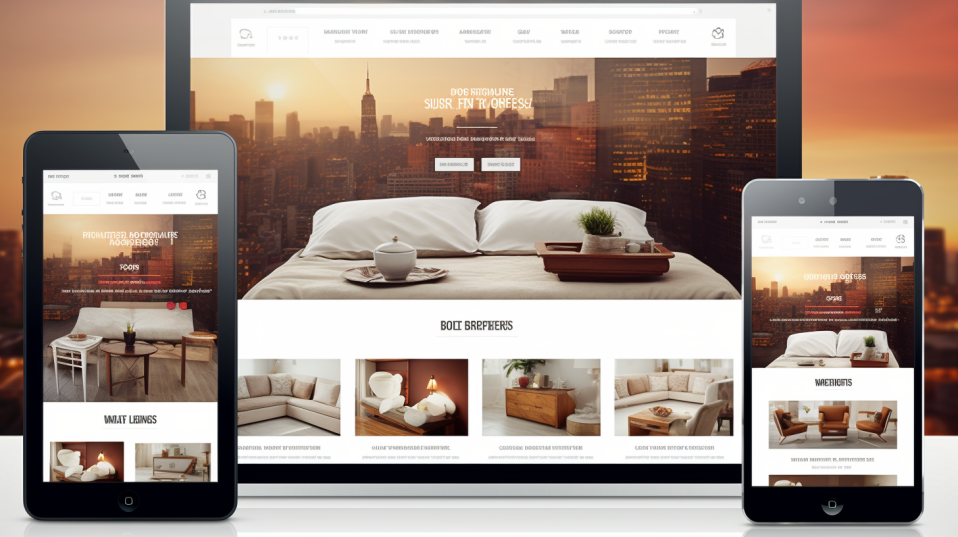In the digital age, the demand for web-related products such as website templates, plugins, and themes has soared. Businesses and individuals seek customizable solutions to enhance their online presence, making it an opportune moment for designers and developers to monetize their skills. Online marketplaces like ThemeForest have emerged as hubs for buying and selling these digital products. This subchapter is a comprehensive guide for creators looking to craft and market web-related products successfully.

Why Web-Related Products Matter
Before diving into the specifics of designing and selling web-related products, it’s crucial to understand why these products hold such significance in today’s digital landscape:
1. Accessibility and Customization
Web-related products offer accessible and customizable solutions for individuals and businesses looking to establish or enhance their online presence.
2. Time and Cost Efficiency
Using templates, plugins, and themes reduces development time and costs significantly compared to building websites and web applications from scratch.
3. Scalability
Web-related products can be tailored to various needs, from personal blogs to e-commerce sites, making them versatile and adaptable.
4. Aesthetic Appeal and User Experience
Themes and templates enhance the aesthetic appeal and user experience of websites, contributing to improved engagement and conversion rates.
Step 1: Choosing Your Web-Related Product Niche
The first step in designing and selling web-related products is selecting your niche. Consider the following factors:
1.1 Identify Your Niche
- Research Market Needs: Identify the gaps and demands in the market for web-related products.
- Personal Interests: Leverage your interests and expertise to choose a niche that aligns with your skills.
1.2 Evaluate Competition
- Competitive Analysis: Assess existing products and their quality in your chosen niche.
- Competitive Advantage: Identify how your product can offer something unique or better than the competition.
Step 2: Product Creation and Development
With your niche chosen, it’s time to create your web-related product. Here’s how to go about it:
2.1 Pre-Planning
- Project Scope: Define the scope of your product, including its features and functionality.
- User Experience (UX) Design: Create wireframes and design mockups to plan the product’s user interface.
2.2 Development
- Coding: Develop your product according to your design and feature specifications.
- Testing: Perform rigorous testing to identify and fix bugs and ensure compatibility across browsers and platforms.
2.3 Quality Assurance
- Quality Control: Ensure your product is of high quality and free from errors.
- Documentation: Provide clear and comprehensive documentation to assist users in installing and using your product.
Step 3: Set Up Your Marketplace Account
To sell your web-related products, you’ll need an account on an online marketplace. In this subchapter, we’ll use ThemeForest as an example:
3.1 Marketplace Account Creation
- Sign Up: Create a seller account on ThemeForest, following their guidelines.
- Seller Profile: Complete your seller profile with accurate and appealing information.
3.2 Product Submission
- Create Listings: Use the marketplace’s submission tools to create listings for your products.
- Product Details: Provide detailed product descriptions, titles, tags, and pricing information.
Step 4: Product Review and Approval
Marketplaces often review products to ensure they meet quality standards. Here’s what to expect:
4.1 Review Process
- Technical Review: Ensure your product adheres to coding and technical requirements.
- Quality Review: Verify that your product meets quality and usability standards.
- Legal Compliance: Ensure your product complies with copyright and licensing regulations.
4.2 Rejection and Resubmission
If your product is rejected, review the feedback provided, make necessary improvements, and resubmit it.
Step 5: Pricing Strategies
Determining the right pricing strategy for your web-related products is essential for success. Here are common pricing models:
5.1 One-Time Purchase
Set a fixed price for your product, allowing customers to purchase and use it indefinitely.
5.2 Subscription Model
Offer a subscription-based pricing model, where customers pay a recurring fee for access to updates and support.
5.3 Freemium Model
Provide a free version with limited features and offer premium features at a fee.
Step 6: Marketing and Promotion
While marketplaces handle some aspects of marketing, you can further promote your web-related products:
6.1 Portfolio Website
- Personal Website: Create a portfolio website to showcase your products, provide demos, and offer support.
- Blog and Content: Publish articles and tutorials related to your niche to attract visitors.
6.2 Social Media
- Social Presence: Maintain an active presence on social media platforms relevant to your niche.
- Engage with Users: Interact with your audience, answer questions, and share updates.
6.3 Email Marketing
- Email List: Build an email list to keep customers informed about product updates and promotions.
Step 7: Customer Support and Updates
Provide excellent customer support and continuous updates to maintain product satisfaction:
7.1 Customer Support
- Timely Responses: Respond to customer inquiries and issues promptly.
- Documentation: Keep product documentation updated and readily accessible.
7.2 Product Updates
- Continuous Improvement: Enhance your products by adding new features and fixing bugs.
- Customer Feedback: Listen to customer feedback to understand their needs and expectations.
Step 8: Legal and Licensing Considerations
Ensure that your web-related products comply with legal requirements and licensing considerations:
8.1 Licensing
- Open Source Licensing: Choose an appropriate open-source license for third-party components.
- Copyright and Intellectual Property: Protect your product and its code with copyright.
8.2 Terms of Use
Draft clear terms of use and licensing agreements for your products to inform customers of their rights and responsibilities.
Conclusion
Creating and selling web-related products is a dynamic and rewarding venture for designers and developers. It allows you to leverage your creativity, technical skills, and niche expertise to provide valuable solutions to businesses and individuals. By following the steps outlined in this subchapter, you can navigate the world of web-related product creation and marketing with confidence, transforming your passion into a profitable endeavor in the ever-evolving landscape of digital design and development.




